The Ministry of Defence (MOD) has awarded a £480 million contract to BAE Systems Surface Ships Ltd for the in-service support of Combat Management Systems (CMS), Shared Infrastructure (SI), and Networks for Royal Navy platforms.
CORRECTION 26/06/2024: In our previous article, we incorrectly referred to the Ministry of Defence (MOD) contract announcement as a new contract. The correct information is that this contract notice supersedes a previous one from November 2022. We apologise for the error. The contract notice supersedes a previous one, referenced as 2022/S 000-033287, which was published on 23 November 2022. This update continues the in-service support arrangement with BAE Systems and outlines the terms for the next phase of the contract.
According to the notice, the contract encompasses a wide range of Royal Navy assets, including “Type 23 Frigates, Type 45 Destroyers, Queen Elizabeth Class Aircraft Carriers, Landing Platform Docks, Royal Fleet Auxiliary ships, and Type 26 Frigates.”
Additionally, the contract involves the installation of SI Version 3 on Type 45 Destroyers and support for the hosting infrastructure on Type 31 Frigates to enable the Maritime Electronic Warfare Systems Integrated Capability (MEWSIC).
The CMS is described as “a multi-layered system, comprising component parts, products, and individual equipment which all work together to provide situational awareness and lethality to the operator.”
The notice elaborates that the CMS includes software, hardware, and hosting infrastructure through SI and Combat System Networks, with the system integration ensuring interoperability across various sub-systems.
The decision to award the contract to BAE Systems without a prior tender process is justified by the MOD on technical grounds. The notice states, “BAES are the Design Authority of the CMS, BAES SI & Networks and is the only supplier with the appropriate level of system design & configuration knowledge to meet the requirement and the CMS operates using proprietary software which the Authority does not have the right to share with a third party.”
The MOD further explains that using any third-party supplier “would increase the complexity of sub-system alignment and integration, increase the difficulty of assigning responsibility for identification and rectification of equipment failures, and present an unacceptably high risk of compromised safety management.”
The contract highlights the importance of BAE Systems’ role in maintaining the operational readiness and safety of Royal Navy vessels, stating that BAE Systems is the only operator with the technical expertise required for “obsolescence management and modifications to ensure uninterrupted equipment availability, interoperability and underwrite such modifications from a safety perspective.”
For transparency, the notice clarifies, “This notice advises that the Authority has decided to negotiate a contract with the named supplier on a single source basis, and is published for reasons of transparency.”


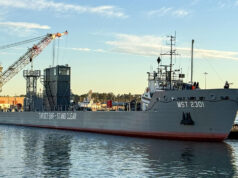
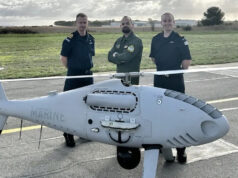
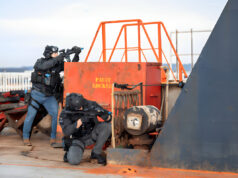
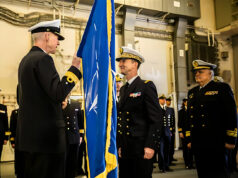
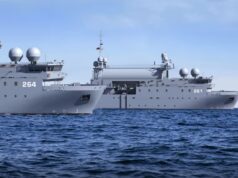
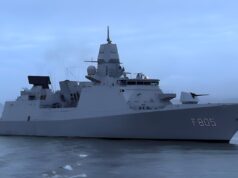
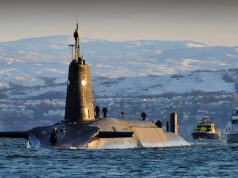
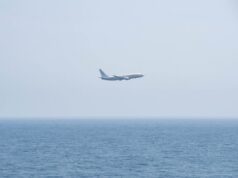
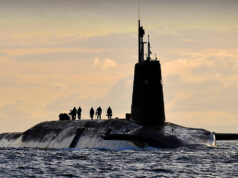


Single supplier …
Now, where are the ships?
Under construction
Has to be sole source in this case. The CMS software is massively complicated, and BAE has developed it from the start. Giving the support role to anyone else would be suicidal.
Thank you Paul. However, I still think a very dominant sole supplier is an issue, but as you write, not in this instance.
“underwrite such modifications from a safety perspective.â€
UK defence organisations have been confusing Occupational H&S and system-safety (SysSa) for decades. Farcical and ineffective!
Ummm what they said was using a third party would increase the risk of failure in the system….as in the combat management system would potentially fail….and create a safety risk..you know those pesky health and safety risks like the ship foundering.
Its risk management as applied to the Platform safety case.
Issues with nav system data corruption resulting in a grounding or collision.
The resultant flooding affects a magazine with water activated stores in it.
The Stores operate because the grounding has knocked them out of their stowage and damaged the arming wires .
The stores activate causing heat and smoke.
The smoke filters through the Mag vent system into the ship filling it with orange smoke…
All because the software had an error in one line of code that moved a decimal point…
Thats an extreme example of the sort of what ifs you can do for safety cases.
If you get asked to do one avoid them like the plague.
You will never ever get the time back which you could have spent more productively hitting your toes one at a time with a 5lb lump hammer!
In both UK surface and submarine CMS development, I witnessed rampant incompetence in both systems-safety (SysSa) and systems-engineering (SysEng).
Farce 1: BAE management sent SysSa people on an Occupational H&S course, down in the naval dockyard. All hard-hats and hi-viz; not one reference to SysSa or lifecycle standards (Def Stan 00-56, MIL-STD-882).
Farce 2: One senior safety manager in BAE spent her time issuing warning emails about slips-n-trips in the office. She was clueless about SysSa and, tellingly, she was not even a qualified engineer.
Farce 3: The BAE CMS team was totally clueless about SysEng, V-Model and relevant standards (ISO 15288, ISO 29148, ISO 12207).
Farce 4: Given the HCI was a mess, the BAE CMS team admitted to ignoring human factors standard Def Stan 00-250.
Formal competence management with objective criteria is the only cure for endemic incompetence in UK industries, especially defence.
Even the USA screwed-up its naval system-safety (SysSa), resulting in fatal collisions. Look up USS McCain and USS Fitzgerald.
As an uninformed outsider I can’t help feeling slightly bothered that the RN has 2 different CMS, the Thales one for T31 and the BAE one for pretty much everything else. Is that simply not an issue and it isn’t that difficult/lengthy/expensive to put someone on a conversion course if they need to move between vessels with different CMS?
Were there compelling reasons to use a different system for T31 (e.g. perhaps pre-existing integration with the Thales radar) such that the benefits outweighed any possible downsides of not having a common system across all escorts?
Also, is it at all sensible to try to discuss which one is better – the Thales or the BAE CMS – or does it end up being a case of “horses for courses”, “each one has its own strengths and weaknesses”, “no clear winner” etc?
T31 is down to what Babcock told the RN they could have for the money to meet the spec the RN gave Babcock.
Systems put the data out into a network and the other systems take it off the network as they need it for their own use. You no longer have to hard wire an analogue 3 line syncro connection between say a Gyro system into each and every system that requires a gyro input. Cuts down on copper wiring and LAN Cables(Good!) and uses blown fibres as the network connectors.
The BAe CMS will have an interface unit between it and the T31 Ops Room command system. That way you can get the data to cross between each system.
And yes there will be differences in operating and inputs but the RN is used to that. Operators are always adapting to new features as they are introduced into systems.
Its better than it was though.
In the days of yore we had, ADAWS, CAAIS, CACS, DNA, ADAWS 2000( T42 CVS, T22, T22 B2,T23, LPD) as OPS Room command systems on numerous classes of ship, all needing different operator inputs, all sending data via an interface to CSS which was a standalone Command Support System…a forerunner of what now exists. At the time CSS was cutting edge, fusing ships and external data from numerous sources into a “picture” for the command to use. Separate displays where needed at the CO, PWO, Operators consoles and a big screen in the ops room for everyone to look at (29 Inch TV !!!) It used 3 servers all using a different operating system.
Thanks for the really informative reply Gunbuster. Very interesting, and quite reassuring. I don’t feel so troubled by the different CMS now and I think I understand that bit in the article that does mention the T31.
And ….. 29″ TV as the Ops Room big screen. Wow! Perfectly appropriate at the time I’m sure but it’s often a bit of a shock when I’m told stuff like that and get reminded of how far technology has progressed in my adult lifetime.